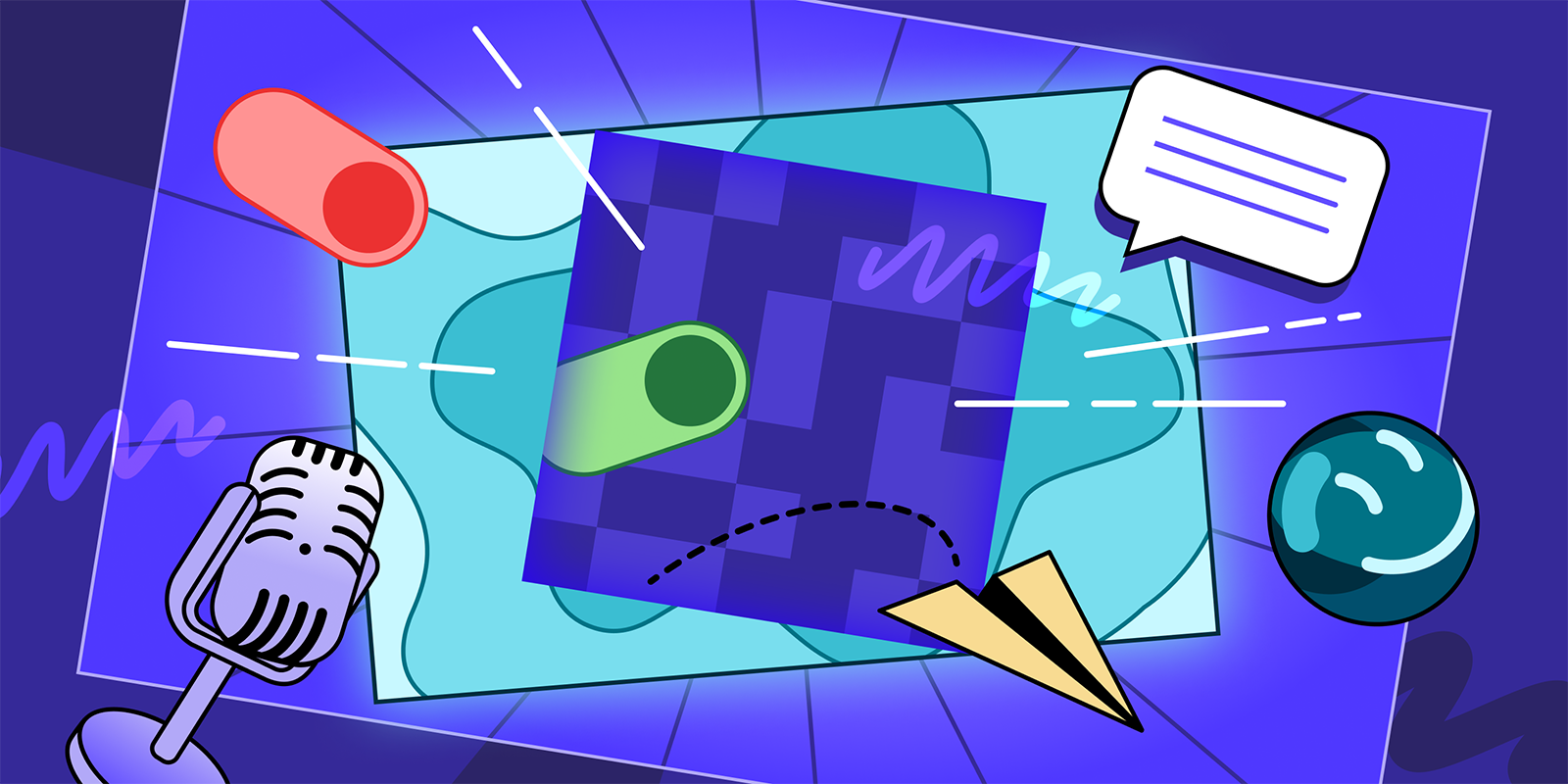One post can tank your reputation. One misquoted specialist can spark a PR nightmare.
Nowadays, everybody is continuously online. So your brand can’t afford to improvise. A strategic communication plan is your first line of defense and a key part of your PR strategy.
In this guide, we’ll show you how to write a communication plan that keeps your messaging clear, consistent, and crisis-ready. So you’re always in control of the narrative.
TL;DR – what you’ll learn
- What a communication plan is and why it matters in PR
- How to make your communication plan work for AI search and GEO
- How to create a step-by-step communication plan
- Three communication plan templates (internal, campaign, product launch)
- Common mistakes to avoid
- How Prowly’s PR tools streamline the process
Try Prowly's media monitoring free for 7 days
Start tracking your brand and keywords for free (no credit card required) in Prowly.
- Comprehensive monitoring: Track the web, social media, print, and broadcast mentions
- Transparent pricing: Plans start at $258/month
- All-in-one platform: Get everything you need in one tool for PR, incl. media database, outreach, reporting, and more
What is a communication plan?
A communication plan is is a strategic document that outlines how a brand communicates key messages to internal and external audiences. In other words–it'sa simple roadmap for how a brand shares messages with the public, media, employees, and other crucial groups.
It shapes what you say, who will say it, when, and through which channels. While a marketing communication plan is focused on selling products or services, a communications plan is about managing your brand’s image and building trust.
It’s especially relevant in PR, announcements, and dealing with crises.
Why is a communication plan important in PR?
Today, PR teams juggle tight deadlines, constant media buzz, and stakeholder pressure to show results. With multiple channels and rapid timelines, messages can get mixed or lost.
That’s why a solid communication plan is essential. It aligns messaging, ensures clarity, tracks effectiveness, and makes PR more measurable.
💡PR Tip: Juggling media outreach, internal updates, and brand messaging? A smart comms plan, paired with tools like Prowly, streamlines your work and boosts impact.
Future-proof your communication plan with Generative Engine Optimization (GEO)
A modern communication plan isn’t just about messaging—it’s about discoverability.
As AI tools like ChatGPT and search engines generate answers using trusted online sources, your brand’s visibility depends on being mentioned in the right places. That’s where Generative Engine Optimization (GEO) comes in.
💡 Prowly helps you optimize your communication strategy for GEO by making it easier to secure high-quality, searchable brand mentions.
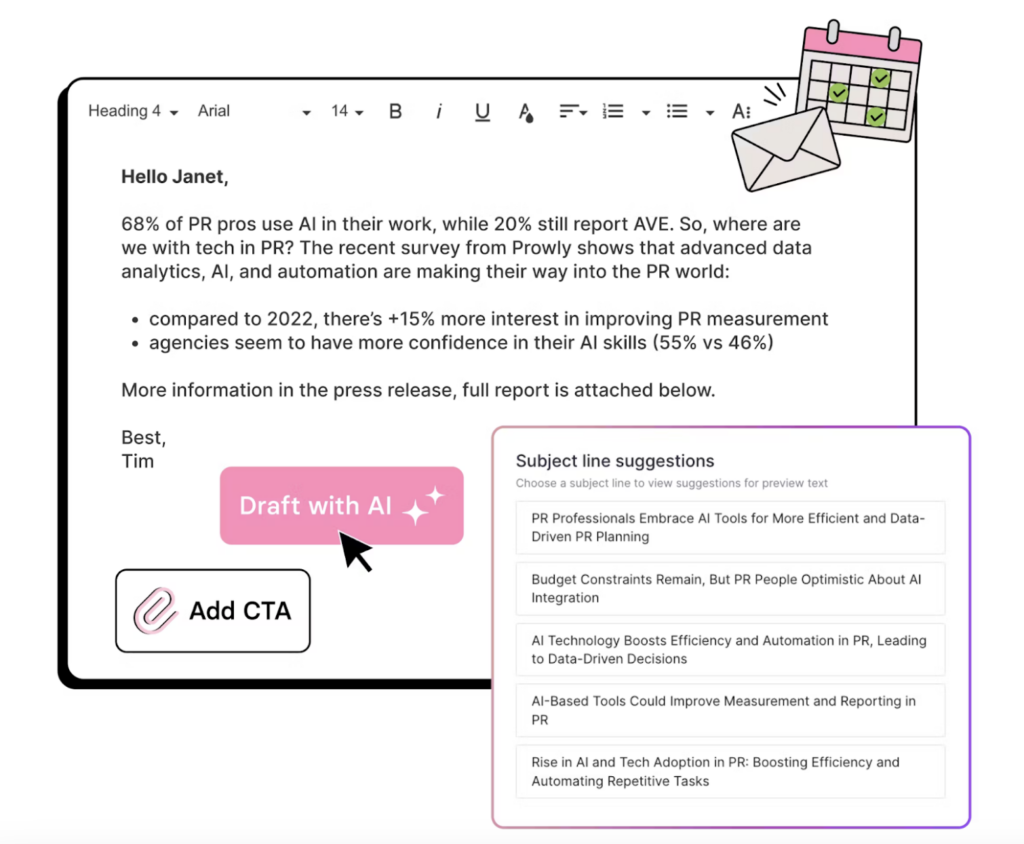
To make your communication plan AI search–ready, here’s what to focus on:
- Use consistent, searchable language: Phrase your key messages using terms your audience would likely ask in a search query. For example, instead of saying “company updates,” say “product launch news” or “new feature announcement.”
- Earn mentions on authoritative sources: AI tools prioritize content from reputable outlets. Use Prowly’s journalist matching and pitching features to target high-authority publications more likely to be indexed by generative engines.
- Highlight your brand’s name and offerings clearly: Avoid jargon or vague metaphors in your press releases. AI summarizers pull concrete, clear details—like product names, brand benefits, and stats.
- Include structured data in your content: While mostly a task for web and SEO teams, making sure press releases and newsroom content are well-formatted, scannable, and include headlines, bullet points, and FAQs can increase their visibility in AI-generated summaries.
With features like AI-powered journalist matching, writing assistant, and multi-channel media monitoring across online, print, broadcast, and social media, that tracks sentiment and reach, Prowly supports your efforts to get mentioned in authoritative sources—boosting the chances your brand appears in AI-generated responses and search results.
What to include in a communication plan
A strong communication plan keeps your team aligned, your message clear, and your goals in focus. Here are the six essential elements every plan should cover:
- Goals
What are you trying to achieve? (e.g., raise awareness, manage reputation, drive engagement) - Target audiences
Who needs to hear your message? (e.g., media, customers, employees, investors) - Key messages
What core points do you want to communicate to each audience? - Channels
How will you share your message? (e.g., press releases, social media, email, internal platforms) - Timing
When will messages go out? (e.g., timelines, sequencing, and key dates) - Measurement & evaluation
How will you track success? (e.g., media coverage, open rates, sentiment, engagement)
Now, let's cover several templates for a communication plan.
Communication plan templates you can use
Below you can find ready-to-use examples of a communications plan.
Template 1: internal communication plan
Goal: Improving employee understanding of new company values
Target audience: Employees, Department heads, Team leads
Key messages:
- Why the change matters
- What’s expected of employees
- How support will be provided (available support)
Channels:
- All-hands meetings
- Email newsletters
- Slack or intranet posts
Timing example:
| Message | Channel | Owner | Date |
|---|---|---|---|
| Company values update | Meetings | HR | TBD |
| FAQ follow-up | Comms Team | TBD |
Measurement & evaluation:
- Pulse survey results
- Engagement in Slack threads
- Attendance at all-hands meeting
| Plan Type | Main Goal | Target Audience | Primary Channels |
|---|---|---|---|
| Internal Comms | Inform & engage employees | Staff, leadership teams | Slack, intranet, email, all-hands meetings |
| External Campaign | Build brand awareness | Media, customers, partners | Press releases, social media, newsletters |
| Product Launch | Drive attention & adoption | Journalists, early adopters | Press releases, email pitches, media outreach |
Template 2: external campaign plan
Goal: Building awareness for a sustainability initiative
Target audience: Journalists, Customers, Industry influencers
Key messages:
- Our brand’s commitment to sustainability
- Impact goals and progress
- How audiences can get involved
Channels:
- Press release
- Social media (LinkedIn, Twitter, Instagram)
- Email newsletters
Timing example:
| Message | Channel | Owner | Date |
|---|---|---|---|
| Press release launch | Newswire + Prowly | PR Lead | August 5 |
| Influencer outreach | Email pitch | Comms Team | August 6 |
Measurement & evaluation:
- Media coverage
- Social media mentions
- Newsletter open/click rates
Template 3: product launch
This template shows how to structure a product launch communication plan using Prowly's tools.
Goal: Drive media attention and customer sign-ups for new product
Target audience: Tech journalists, Existing users, Industry analysts
Key messages:
- What the product is and why it matters
- Unique features
- Launch offer (if applicable)
Channels:
- Press release (using Prowly's tool)
- Targeted e-mail pitch (you can do it with the help of the Prowly e-mail feature)
- Blog post and landing page
- Social media teaser campaign
Timing example:
| Message | Channel | Owner | Date |
|---|---|---|---|
| Press release live | Prowly Newsroom | PR Manager | September 10 |
| Personalized media pitches | Email via Prowly | Comms Lead | September 10–12 |
| Product demo blog | Blog | Product Marketing | September 11 |
Measurement & evaluation:
- Coverage from key outlets
- Media pitch response rate (track via Prowly)
- Sign-up conversions on the landing page
Each of these templates can be adapted to your specific goals, channels, and audiences. Use them as a base to build a communication plan that’s measurable, actionable, and aligned with your brand.
How to write a corporate communication plan (step-by-step)
An effective communication plan should be done thoroughly and involve some crucial points that make it usable and helpful. Such a plan should also be in line with the communication strategies of your brand.
Remember that the company communication plan is a core part of its messaging and communication.
Below we define the communication plan construction to help you create your own.
Step 1: Define your goal
👉 What are you aiming to achieve? Be specific.
In business, each process starts by defining the aim. By clearly stating what your organizational communication plan is trying to achieve, you are ready to draw a roadmap. This will guide everything from messaging to measurement. Keep it specific and outcome-focused.
Example: Secure 10 media placements in Tier 1 outlets in 30 days.
Step 2: Get to know your audience
👉 Tailor the plan to audience needs. Use segmentation.
To create effective communication strategies, you need to know who your audience is. Identify the key groups you're communicating with and what they care about. Tailoring your messaging and channels to each audience is crucial for impact and should be a solid point of your communication strategy.
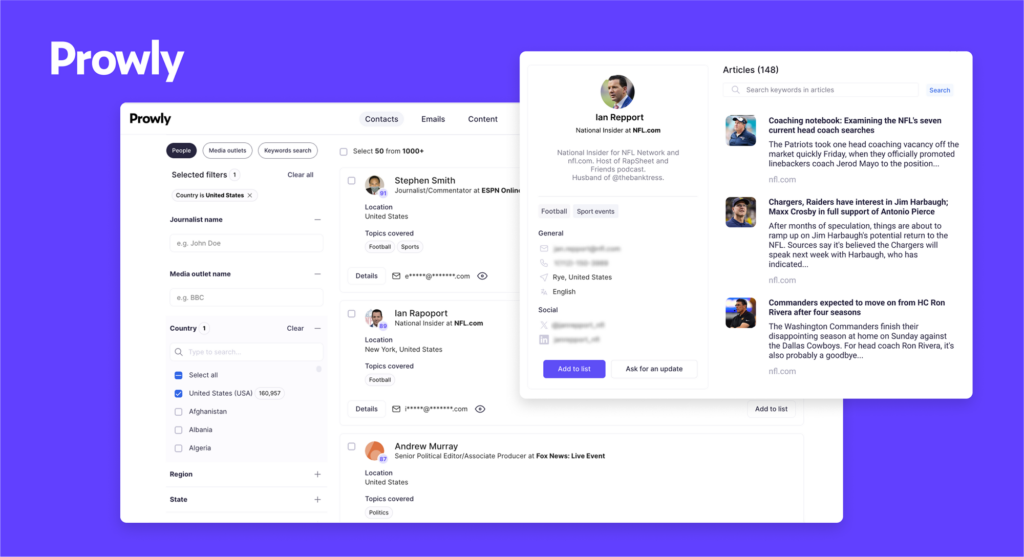
Example: Tech journalists, early users, and the sales team.
💡 Tool Tip: Build segmented media lists using the Media Database. Filter journalists by beat, region, or past coverage to target only the right contacts.
Step 3: Craft your key messages
👉 Develop 2–3 concise messages per audience.
Now it's time for specifics. Make sure your messages are clear, relevant, and reflect your brand voice.
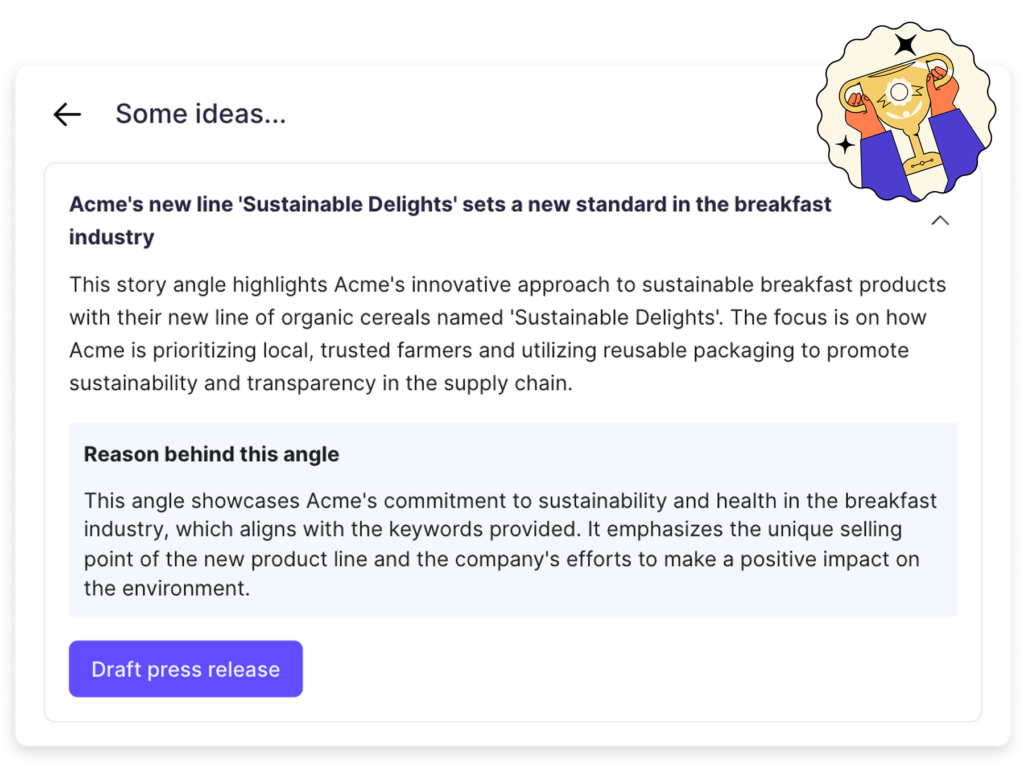
Example: Our new tool helps freelancers save 5+ hours a week, powered by AI, built for real work.
💡 Tool Tip: Use the AI Assistant to generate and refine key messages. You can use the AI Assistant in the release editor to create audience-specific messaging in seconds.
Step 4: Choose your channels
👉 Pick channels based on audience behavior and reach.
Your communication strategies and your plans are not just about the messaging. They are also about the way of sending it out. Decide where and how your messages will be delivered. Think about reach, relevance, and what’s proven to work for your audience.
Example: Press release for media, targeted email for users, Slack announcement for internal teams.
💡 Tool Tip: Publish on your Newsroom and pitch directly from the PR CRM.
Step 5: Set timing and responsibilities
👉 Assign owners, align timelines across teams.
Outline when each message will go out and who’s responsible for making it happen. But do not be overenthusiastic with this schedule. Keep it realistic and coordinated across channels.
Example: Day 1 – Press release, Day 2 – email, Day 3 – internal update
Step 6: Measure success
👉 Choose 3–5 KPIs to track the plan’s effectiveness.
Look at both reach (e.g., open rates) and impact (e.g,. engagement, signups, sentiment).
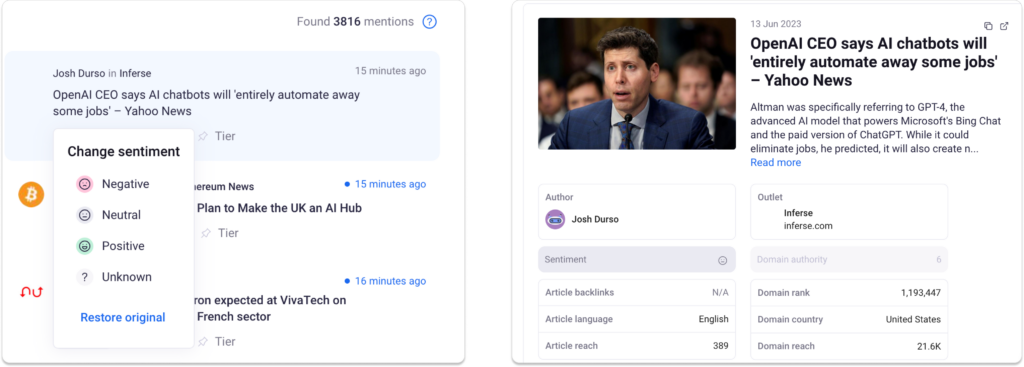
Example: 15 media mentions, 500 email opens, 50 demo requests within two weeks.
💡 Tool Tip:
➖ Use built-in analytics to track pitch responses, coverage, and newsroom traffic.
➖ Generate branded reports with a few clicks to share campaign results with stakeholders in minutes.
➖ Prowly’s AI Assistant helps you turn your goals into story ideas and ready-to-pitch press releases. You can draft the whole communication plan in one tool.
Avoid these common communication plan mistakes
Vague objectives
⛔️ If your goal is something like “get more visibility,” it’s too broad to guide real action or measure success.
How to fix it: Make your objectives specific and outcome-based. For example: “Secure 10 media placements in top-tier outlets within one month.”
No timeline
⛔️ Without clear deadlines or task owners, even great ideas stall.
How to fix it: Assign roles and dates to every deliverable. Use a shared calendar or campaign dashboard to keep things moving.
No audience customization
⛔️ One-size-fits-all messaging rarely works. Different audiences care about different things.
How to fix it: Shape your key messages and channels for each group, such as journalists, customers, execs, etc. Use the Prowly Media Database to segment contacts and the AI Assistant to tweak messaging by audience.
Ignoring follow-ups and feedback
⛔️ Launching isn’t the end, follow-up and feedback are essential for long-term impact.
How to fix it: Build in time for pitch follow-ups, internal check-ins, and performance reviews. With Prowly, you can track open rates and responses with the Media CRM and use Campaign Reports to gather insights.
💡 Tool Tip: Prowly lets you track open rates, auto-schedule follow-ups, and create stakeholder-ready reports.
Turning a plan into PR results: ShePR’s strategic communication plan case study
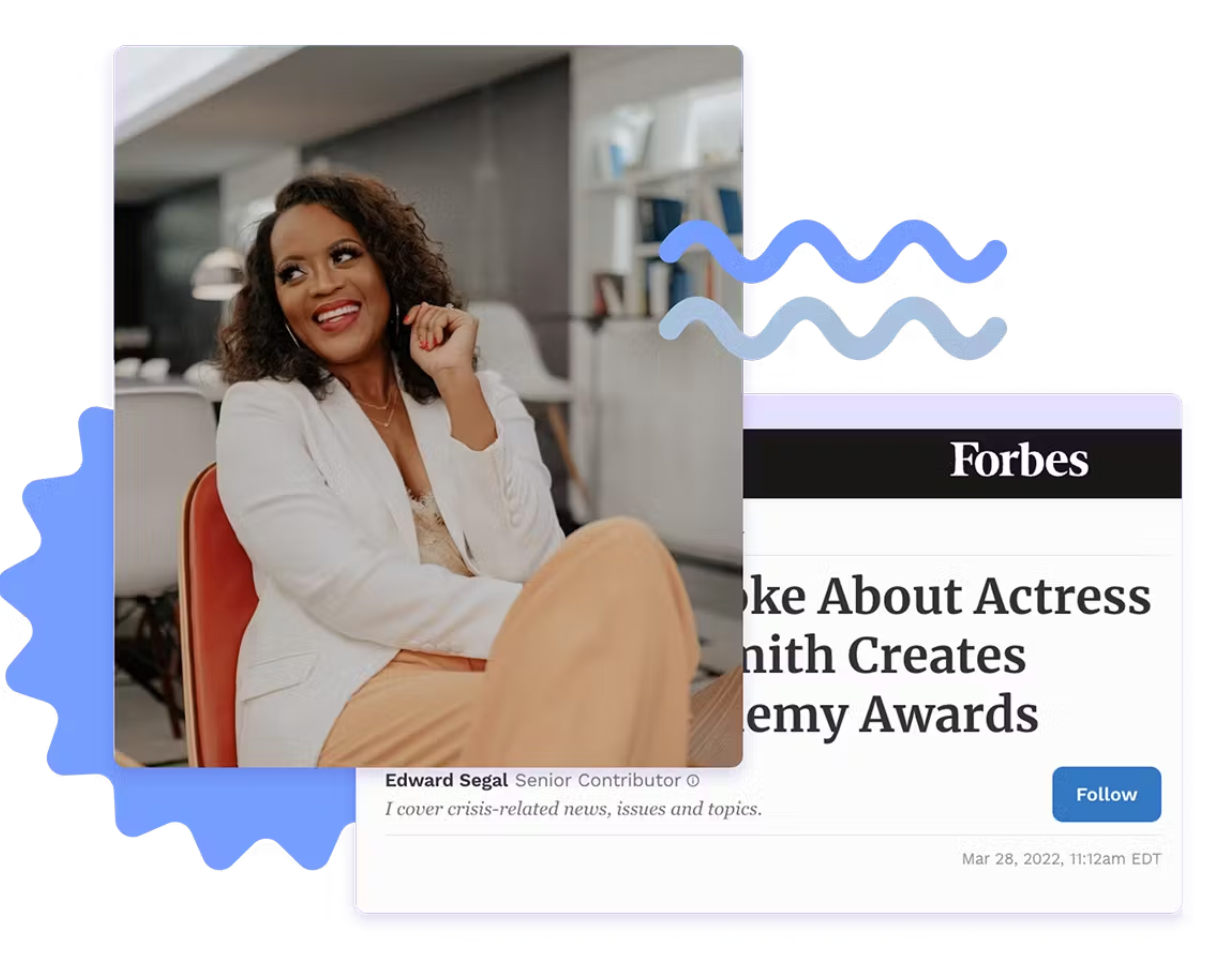
ShePR is a boutique, women-led PR agency focused on amplifying women-led companies and voices.
How did ShePR use Prowly to succeed?
- Planning & Research - they started by using the Media Database to find the right journalists fast.
- Press Release Distribution -the agency publishes and distributes releases from one place via Prowly's Newsroom + CRM.
- Reporting - they started to track success with real-time analytics, replacing tools like CoverageBook.
- Pitching - they switched from Gmail to Prowly’s pitching tool, improving deliverability and personalization.
Dive into their communication plan sample and strategy–learn all key details in the case study.
How Prowly supports smarter comms planning
From the first idea to the final report, Prowly helps in quicker and clearer creation of communication strategies and plans .
What you can get with Prowly
From strategy to reporting, Prowly helps teams:
- Generate ideas with the AI Assistant (brainstorm angles, improve clarity, or rewrite content on the fly, right inside your workflow)
- Write press releases with structured suggestions (follow a structured writing flow with built-in suggestions that guide your tone, format, and focus)
- Pitch journalists with smart subject lines and AI refinement (generate AI-powered subject lines, find journalist matches, and boost deliverability with best-practice prompts)
- Monitor media and sentiment (track brand mentions, measure sentiment, and refine your messaging based on real-time feedback)
- Report results with visual analytics and auto-generated coverage summaries (create visual, client-ready reports and complete with tags, sentiment analysis, and measurable outcomes)
FAQ - communication plan
💬 What should a communication plan include?
Goals, target audiences, messages, channels, timing, and KPIs.
💬 How do I write a communication plan quickly?
Use a tool like Prowly. Start with a goal, define audiences, write 2–3 key messages, select channels, and schedule messaging.
💬 What’s the difference between a communication plan and a marketing plan?
A communication plan focuses on internal and external message clarity. A marketing plan is about promoting products.
💬 What tools help with communication plans?
Prowly stands out with built-in planning, pitching, and analytics. Here you can get to know more AI tools for Public Relations.
💬 Can AI help me create a communication plan?
Yes—tools like Prowly’s AI Assistant generate press releases, segment contacts, and auto-track results.
Final summary: what is a communication plan?
What is a communications plan? Hope you now know the answer. But if not:
A communication plan is a key part of any PR and communication strategy.
It indicates how you’ll share the right message with the right audience at the right time, whether for a product launch, internal update, or crisis response. Unlike a marketing plan, it focuses on messaging clarity, stakeholder alignment, and efficient information flow.
A well-crafted plan includes goals, audiences, messages, channels, timing, and metrics.
Whether for a product launch or brand reputation management, having a comms plan means staying in control—even when things go off script.
